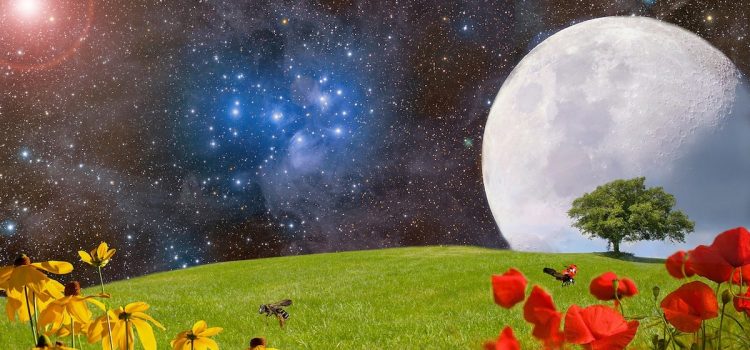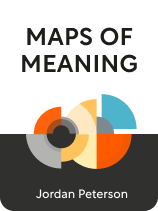

This article is an excerpt from the Shortform book guide to "Maps of Meaning" by Jordan Peterson. Shortform has the world's best summaries and analyses of books you should be reading.
Like this article? Sign up for a free trial here.
What are creation myths? Is there any truth to them? How do they function in society and in the human psyche?
Two general storylines crop up all over the world. One is the creation myth, which, according to Jordan Peterson, provides the underlying basis for society. In Maps of Meaning, he explains why creation stories pervade and persist.
Continue reading to learn about creation myths and what they provide us.
Creation Myths
What are creation myths? Despite some modern attitudes toward them, creation stories aren’t just fanciful tales rooted in ignorance about the world’s beginning. On a deeper level, creation stories explain how an ordered society arises out of prehistoric chaos. Peterson lays out the steps that creation stories take, dividing the primordial “void without form” into the separate aspects of nature, and then organizing the hierarchy of the universe. Beyond explaining where everything comes from, creation stories establish the moral structure that holds society together.
In the beginning of all creation stories, the cosmos is created from a sea of potential—a form of the primeval Dragon. Peterson says this happens in one of two ways—a single deity dividing the universe into its parts (as in the Abrahamic tradition) or by the sexual, ouroboros-like union of Father and Mother deities (as in Greek myth, in which Gaia and Uranus give birth to the Titans). The first wave of gods includes untamed forces of nature, such as the sun, the sea, and the sexual drive. The components of the world now exist but haven’t been placed in their natural order.
(Shortform note: It’s not hard to stretch the metaphors of myth to bring them in line with modern theories of cosmology. In Astrophysics for People in a Hurry, Neil deGrasse Tyson explains that in the current scientific model, the very early universe was an undifferentiated sea of subatomic particles—the primordial stuff of Chaos from myth. As the universe expanded and cooled, “light was separated from darkness,” and the primal Chaos divided into the constituent components of reality—matter, dark matter, energy, and dark energy.)
The new, wild gods battle for supremacy, often angering the Creator or the primeval Dragon, who then decides to end the gods’ warfare by killing them individually or by destroying the world (usually with a flood). But then, the youngest of the elder gods’ children (Zeus in the example of the Greeks) takes on the aspect of the Hero to confront and halt the destroyer god’s madness. As the victor, the young god is elevated to the highest position (that of the Good King), placing the other gods into a hierarchy beneath him and setting the stage for the world as we know it.
(Shortform note: The battle between gods that Peterson describes may seem alien to Abrahamic religions such as Christianity. However, an early Christian sect known as the Gnostics embraced this ideology. They drew heavily on the ideas of Plato, who suggested that a lesser god called the Demiurge created the material world in opposition to the wishes of the ruling God. The Gnostic Christians believed the Demiurge was the god of the Old Testament, while the God who fathered Christ sought to save the world from the damage done by his earlier subordinate. This interpretation of the creation bolstered the Gnostics’ belief that the material world was corrupt and that goodness could only be found through obedience to the true God.)
As cultures developed in the pre-scientific world, creation stories laid the moral groundwork for social order and the divine right of kings. Peterson writes that the king would act as a stand-in for the gods, ordering the various aspects of society just as the highest god ordered the universe. Many societies, such as the Egyptians and the Maya, viewed their rulers as gods themselves who acted as intermediaries between the heavens and the mortal realm.
(Shortform note: The doctrine of the divine right of kings held sway well into the modern era. As late as the 17th century, scholars such as Bishop Jacques-Bénigne Bossuet advanced the claim that royal privilege derived from the mandates of God. The first major dent in the divine right doctrine was made by the British academic John Locke, who argued in his First Treatise of Government that there was no Biblical basis for royal sovereignty and that political power actually derived from the consent of the governed.)
We commonly assume that someone “made up” these creation stories, but Peterson argues that isn’t the case. There are too many similarities between creation myths from all over the world. Instead, he argues that creation stories are an emergent property of human beings sharing their ideas and tribal customs through language, abstracted and fine-tuned over thousands of years into symbolic representations of societal order. Belief systems that include many warring gods transition to beliefs in hierarchical gods, representing the organizational structure of civilization. This process of abstraction continues over time toward religions in which a single god with multiple aspects (such as the Father, Son, and Holy Spirit) rules and embodies all Creation.
| Emergence and Abstraction An emergent property of a system—such as a community, an economy, or a natural phenomenon—is a characteristic that’s dependent on the behavior of the system’s components while being independent of the actions of any single component. For instance, stock market fluctuations “emerge” from the choices of individual investors, but aren’t affected by the actions of any single broker. The most prevalent emergent properties of human organization are language and culture, which necessarily includes religion and myth. Abstraction is a uniquely human ability that lets us think creatively and solve problems based on limited data. Through language and metaphor, we can understand abstract concepts with no physical reality—such as good and evil. Myth, as abstraction on a cultural level, is useful in the modern world as a way to communicate across cultural boundaries. In Understanding Comics, cartoonist Scott McCloud explains that abstraction lets a storyteller strip an idea to its basic essentials. The more abstract a character is (whether it’s Achilles or Charlie Brown), the more a story’s recipient identifies with the Hero, as Peterson advises in the following section. |

———End of Preview———
Like what you just read? Read the rest of the world's best book summary and analysis of Jordan Peterson's "Maps of Meaning" at Shortform.
Here's what you'll find in our full Maps of Meaning summary:
- Why myths are vital to how humans confront and make sense of a chaotic world
- How to apply the lessons of myth to live a more well-rounded life
- How the findings of neuroscience are echoed in the structure of our most ancient tales






